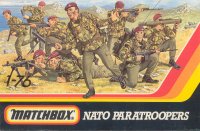However, the history of the land claims are rather interesting.
This conflict was one of the most interesting ones of the
Cold War. It involved two countries who had had some defense and trade
relations in the 1970s but definetly changed in the early 1980s.
Argentina was being ruled by a military Junta, who had a
horrible human rights record in their dirty war against what they felt was a
threat of communism.
In an effort to divert their populations attention to the
human rights issue, massive inflation and general mismanagement of the country,
Argentina seized on the public’s patriotism on regaining what they called
Islvas Malvines, otherwise known to the world as The Falkland Islands.
The story goes that in the 1830’s, Argentina had occupied
the islands after the Spanish had left the South American continent. The
islands had been claimed by the British in the late 18th century.
There had been some attempts to colonize them with Acadian deportees but this
attempt failed.
The Argentinan’s claimed that the islands were empty and
that their occupation meant the area was now theirs. The British came back,
expelled the small garrison without violence and then reoccupied the area.
The Argentinan argument was based on this, plus some rather
interesting geography in their believe that the Falkland Islands are
geologically attacked to the South American continent, thus they believe this
is their homeland. What they don’t usually argue is the fact that they nearly
went to war with Chile over another similar dispute over islands in the south
near Cape Horn.
National pride can really put you in a hot position.
So in April 1982, Argentina sent naval amphibious forces to
retake the islands and to expel the British occupiers. As seen in many
documentaries on this conflict, as well as stories found on the Britain’s small
wars website, the Argentinan military believed they were liberating the area.
What shocked all of them was the fact that for all intense of purpose, the area
was VERY British.
Thus, a small dispute became a very big international
incident and has been studied ever since due to the effects of modern warfare
in an area of wilderness, which matched what the British forces trained for at
home.
This blog post will not get into the rights and wrongs of
the conflict, rather will show via wargamming how the war was fought by both
sides using modern weapons of the 20th century, and how a
professionally trained and led army was able to defeat a numerically larger
army made up of a mix of professional and conscripts South American army.
Royal Navy:
3 Commando Brigade: 29 Commando, Royal Artillery: 2 105mm
guns
42 Commando, Royal Marines: 1 battn
Mix of regular British figures as well as figures with M16
and M203
1 Sea Harrier (for air support)
5th Infantry Brigade, British Army: 2 Scots Guards: 1 battn
1 Welsh Guards:
1 battn
2 Para, 3 Para:
2 battns
1/7 Gurkha
Rifles: 1 battn
Weapon figures available for these battalions: FN L1A1 SLR,
L2A3 SMG, Bren, GPMG, Carl Gustav, 66mm LAW, 81mm mortar, Milan
Attached was B Sqd, Blues and Royals modeled with 2
Scorpion tanks and 2 Scimitar tanks and 1 Samsom with a Milan added.
Argentina:
Argentinan army:
10th Levalle Mechanized Infantry Brigade
7th Regiment: 1 battn FALs,
For this conflict, the Argentianian troops are modeled with
Roco Minitank NATO figures. They were armed with FNs, Uzis, bazookas, GPMGs, or
substituted WW2 50 Cal and 30 cal weapons
The artillery is modeled with a mix of modern US arty and
WW2 US guns for lack of modern models
Panhard AML 90mm gun (maybe get one)


No comments:
Post a Comment